Danielle has more than 25 years’ experience specializing in real estate and property management with a focus on commercial, multi-family, residential property management, sales, and investments. As a native to Southern California, over the course of her career, Danielle has worked in various real estate markets with extensive leasing experience and local knowledge of residential market rates in cities throughout Los Angeles County and Orange County. Her skills and experience have led her to successfully manage and enhance the value of a portfolio by combining up to the minute core market knowledge, masterful negotiation skills, real estate transaction and business expertise, asset management, tactical goal setting, and solid real estate opportunities.
Danielle is most proud of building long term relationships and creating investment strategies with her clients. She is passionate about assisting new investors of any age to create wealth and passive income by building their real estate portfolio as well as working with seasoned investors to procure additional investments, manage and add value to their current real estate investments.
Danielle loves living by the beach in Belmont Shore and spends her free time with family, traveling and exploring with her twins. However, her commitment and passion to serving her clients equals real opportunities so reach out to her today to discuss how she can assist you in creating your success story to retire early.
1. INDUSTRIAL’S LARGEST OPERATORS EXPAND
- According to an article by Commercial Observer, Industrial real estate heavyweights Prologis and Link Logistics are leading an ongoing expansion in warehouse use despite recent reports of a post-COVID-boom slow in demand.
- Industrial real estate demand has softened in recent months but has retracted from record double-digit growth experienced in 2022 and early 2023. E-commerce’s share of retail sales remains in a new post-pandemic paradigm, and while near-term growth may slow, operators with ample liquidity and a long-term eye remain active in the current environment.
- The CEOs of both companies indicated that they expect to add similar or higher leasing volume in 2024 compared to last year. Link Logistics added 86 million square feet of leased space in 2023, including 23 million in the fourth quarter. Prologis is looking to add up to $3.5 billion in new development in 2023 and expects occupancy levels to remain at or above 96%.
2. HOMEBUILDER SENTIMENT RISES
- Based on data from the NAHB/Wells Fargo Housing Market Index, homebuilder sentiment about housing market sales conditions rose to its highest level in eight months.
- The index measuring views of current sales conditions rose four points to 56. Conditions have steadily rebounded since reaching a recent nadir of 24 in November 2023. Index measures above 50 indicate positive sentiment.
- Expected sales conditions over the next six months also increased, climbing two points to 62. Prospective buyers’ traffic rose similarly two points to 34.
- NAHB economist Robert Dietz mentions that as potential rate cuts stimulate demand, rising material prices, particularly lumber, will impact homebuilder activity. Rising activity could also impact logistics and warehouse inventories as market intermediaries ramp up to meet demand.
3. MIXED-USE PROPERTIES
- As trouble in the Office sector causes some investors to consider repositioning their portfolios, mixed- used projects are emerging as a prospective choice for developers.
- Mixed-use projects bring together office, retail, and residential spaces and offer a medium for reimaging at-risk sub-sectors like indoor shopping malls and CBD office spaces.
- Jamestown, a real estate developer, has utilized the mixed-use approach to implement ambitious projects that accommodate varied local market environments, such as in Atlanta, Brooklyn, and Raleigh.
- Mixed-use projects also offer developers a way to test the success of newer and emerging product types such as advanced manufacturing, life sciences, flex-living, and health and wellness alongside more tried and tested concepts such as traditional residential and retail space.
4. COASTAL PROPERTY VALUES DEFY CLIMATE RISKS
- Despite risks from sea-level rise and storms, US coastal communities remain a hotspot for growth as high-income residents continue to purchase in and populate these areas.
- Coastal property values continue to climb, with both market and policy forces appearing to be at play. A recent study by Nature found that a combination of stable property values for investment, tax advantages for high-income owners, and subsidies for coastal management activities such as beach nourishment have dampened the effect of sea-level rise on coastal property values.
- Still, the report cautions that such effects are likely temporary and that policy components, such as subsidies and tax advantages, distort the price signals that typically reflect longer-term risks.
5. COMMERCIAL PROPERTY PRICES
- According to the MSCI-RCA commercial property price index (CPPI), the decline in US commercial sector prices slowed further in February, declining just 4.0% year-over-year.
- Price declines in CRE have been consistent over the past year and a half, but in February, they fell at their slowest pace of annual decline since 2022 and dropped just 0.3% month over month.
- The industrial sector again emerged as the only property type with an annual increase, growing by 1.9% year over year and 0.2% month over month.
- Apartment sector prices declined 8.9 % year-over-year but extended a six-month-long moderation in annual price declines for multifamily properties. Still, apartment prices posted the largest month-over-month decline across all sectors, falling 0.1%.
- Retail sector prices were flat month-over-month, but annual returns fell by 2.5%. Notably, annual price declines in the sector have softened from the double-digit declines seen during the third quarter of 2023.
- Suburban office prices fell 11.6% year over year and 0.4% month over month. Meanwhile, CBD office valuations fell 29.9% annually and 1.3% monthly. The differing magnitudes of devaluation largely reflect each subtype’s sensitivity to remote work. The negative demand shock appears most intense in dense, high-price office markets.
6. FED INTEREST RATE DECISION
- The Federal Reserve held interest rates steady at its March policy meeting, in line with market expectations that policymakers would continue its wait-and-see approach for the time being.
- Both the Fed and fed futures markets, as indicated by the Chicago Mercantile Exchange’s Fed Watch Tool, kept consistent their projections of three rate cuts by the end of 2024.
- Inflation has come down consistently over the past year, but resilient labor market and consumer spending dynamics have kept price pressures salient and inflation expectations elevated.
- In his post-meeting statement, Fed Chair Jerome Powell stated that the committee is prepared to maintain current interest levels for longer if needed to re-anchor price stability and expectations.
7. CORPORATE TO CRE DEBT SPREAD HITS 24-YEAR HIGH
- Based on data from MSCI, a snapshot of US capital markets shows that the spread between corporate versus commercial real estate debt rates has risen to a high of at least 24 years.
- Dating back to 2000, mortgage rates were consistently low relative to the cost of corporate debt except for during the worst parts of the Great Financial Crisis (GFC), according to the MSCI analysis.
- The rising relative cost of CRE debt indicates that investors are recalibrating the sector’s risk profile relative to other investments. Higher interest rates impact investor returns, with investment funds feeling the pinch recently, according to the report.
8. CRE TOP RISK, SAYS UBS
- UBS recently flagged a potential commercial real estate downturn as a “top and emerging risk” that it’s preparing for in 2024. It cited higher borrowing costs and slumping demand as potential headwinds in its outlook.
- In its annual 2023 report, UBS noted that “adverse effects on valuations from higher interest rates” and a “structural decline in demand for office and retail” could trigger impacts on the bank, given its exposure to the sector.
- UBS’s citing of CRE risks does not suggest a significant CRE downturn. Still, it indicates how shifting supply and demand dynamics may affect the balance sheets of financial firms invested in at-risk assets. The broader CRE market remains a story of diverging sector-level performance and varied metro-area trends.
9. CONTEXTUALIZING CRE RISKS TO BANKS
- According to a recent report by Cohen and Steers, CRE risks to the banking system are spread across large, mid, and small-sized institutions, significantly mitigating potential risks to the financial system.
- The top 25 largest US banks by total assets hold 13% of all commercial real estate mortgages but have just 4% of their total assets exposed to the sector.
- Regional and community (mid-sized) banks are more exposed relative to the market as they hold roughly 30% of all CRE mortgages and, on average, have a 20% balance sheet exposure.
- Banks outside of the top 100 account for roughly 15-20% of all CRE mortgages, but exposure is spread across more than 4,500 institutions nationally.
- Further, their debt service coverage ratios indicate that loan term default risks and low and underwritten values on existing loans are low, as property values have risen over the past ten years.
10. NAR SETTLEMENT
- A recent landmark settlement between the National Association of Realtors and consumer advocates reforms how brokers can charge commissions on home sales, eliminating the standard 5-6% fees charged to sellers to have their homes posted on Multiple Listing Services (MLS).
- If approved, the settlement would open MLS sites to negotiated pricing, and changes to the brokerage fee structure would take effect within months of approval. A hearing on whether to approve the deal is set to take place in the next few weeks.
- Advocates of changes to the system point out that the settlement could increase price transparency and competition in the home-selling industry.
SUMMARY OF SOURCES
- (1) https://commercialobserver.com/2024/03/industrial-real-estate-more-inventory-2024/
- (2) https://www.nahb.org/news-and-economics/housing-economics/indices/housing-market-index
- (3) https://www.globest.com/2024/03/27/mixed-use-much-more-than-office-retail-residential/
- (4) https://www.nature.com/articles/s41467-024-46548-6
- (5) https://www.msci.com/our-solutions/real-assets/real-capital-analytics
- (6) https://www.federalreserve.gov/newsevents/pressreleases/monetary20240320a.htm
- (7) https://www.globest.com/2024/03/27/spread-between-corporate-debt-and-cre-mortgages-hits-24-year-high/
- (8) https://www.reuters.com/markets/europe/ubs-flags-commercial-real-estate-downturn-top-risk-2024-03-28/
- (9) https://www.cohenandsteers.com/insights/the-commercial-real-estate-debt-market-separating-fact-from-fiction/
- (10) https://www.nbcnews.com/business/consumer/realtor-settlement-affects-homebuyers-sellers-how-explainer-rcna144650
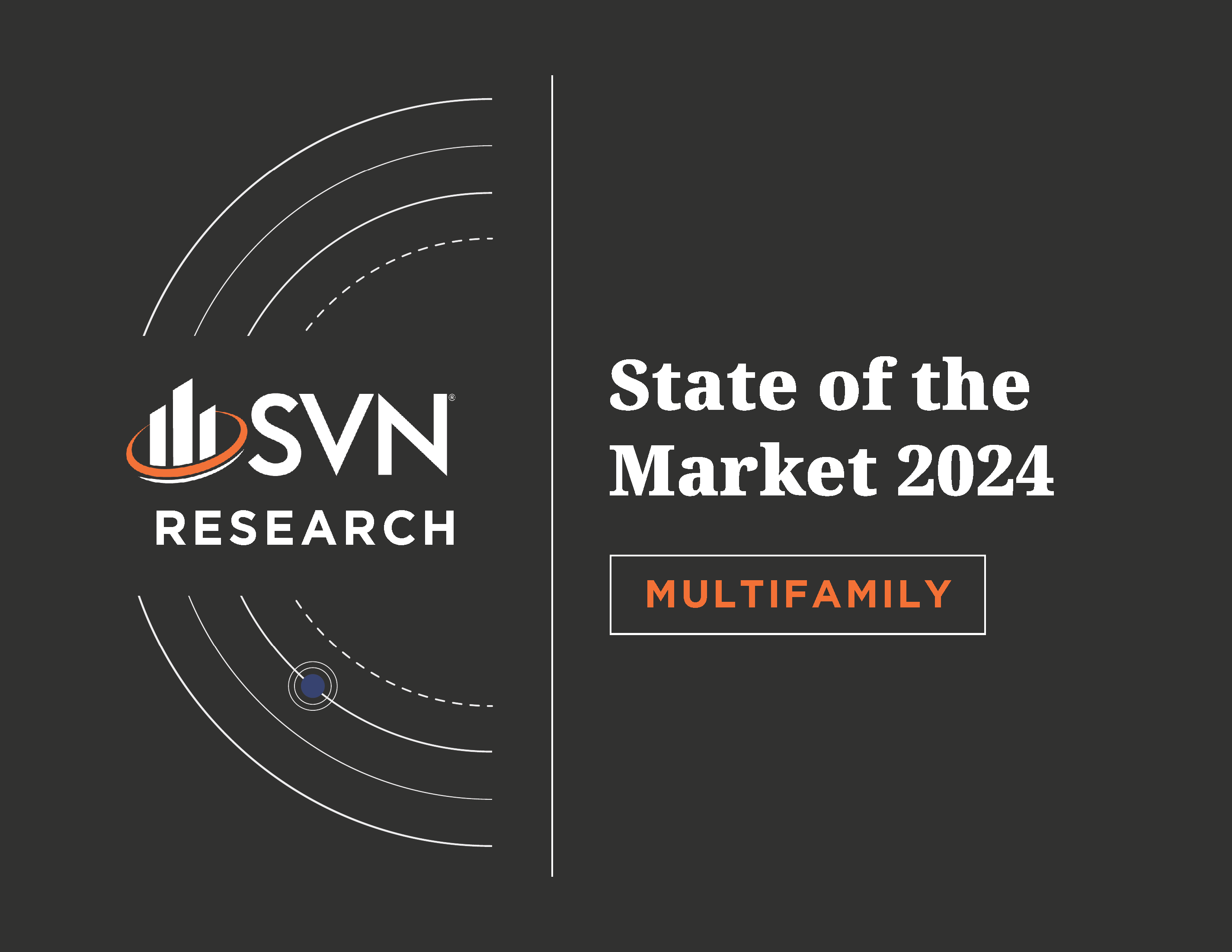
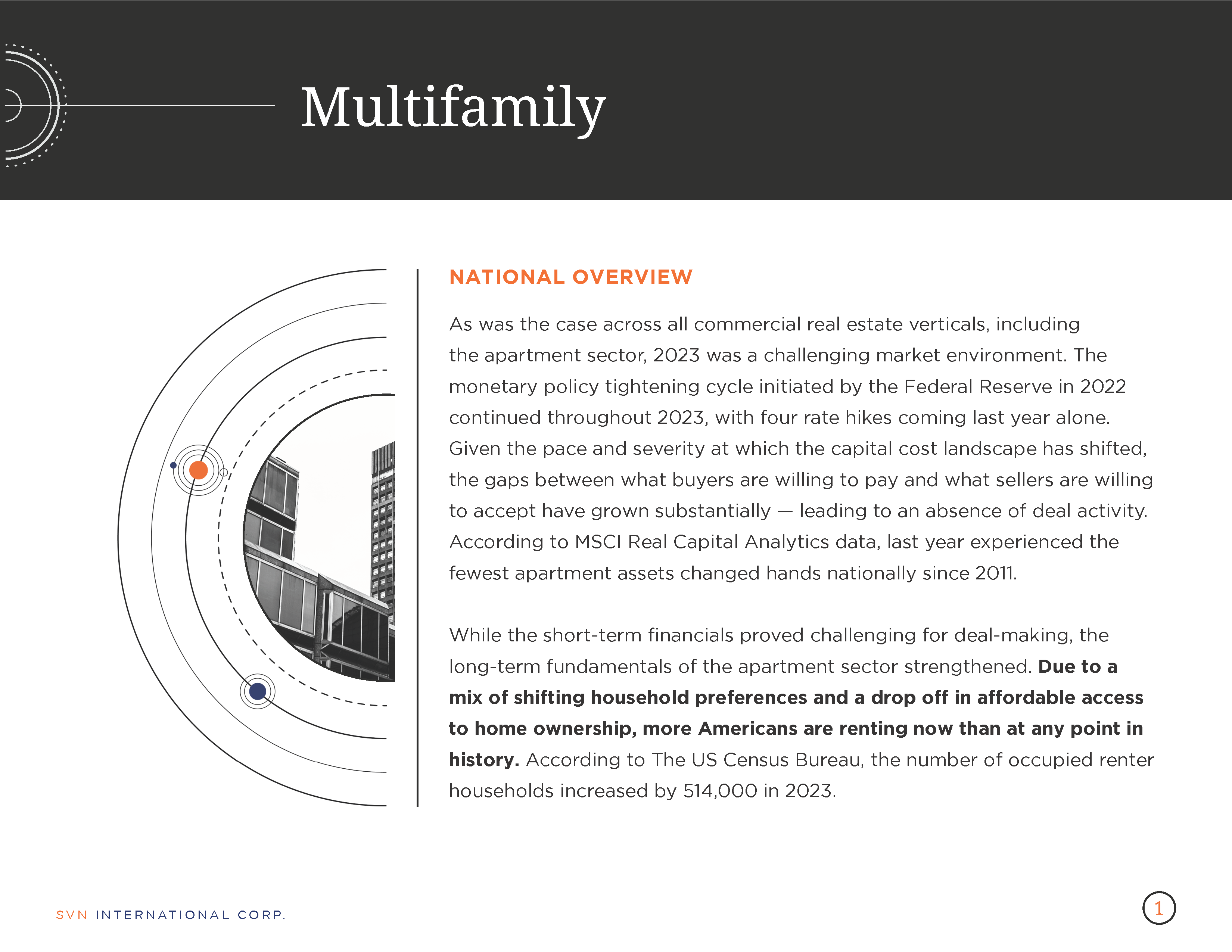
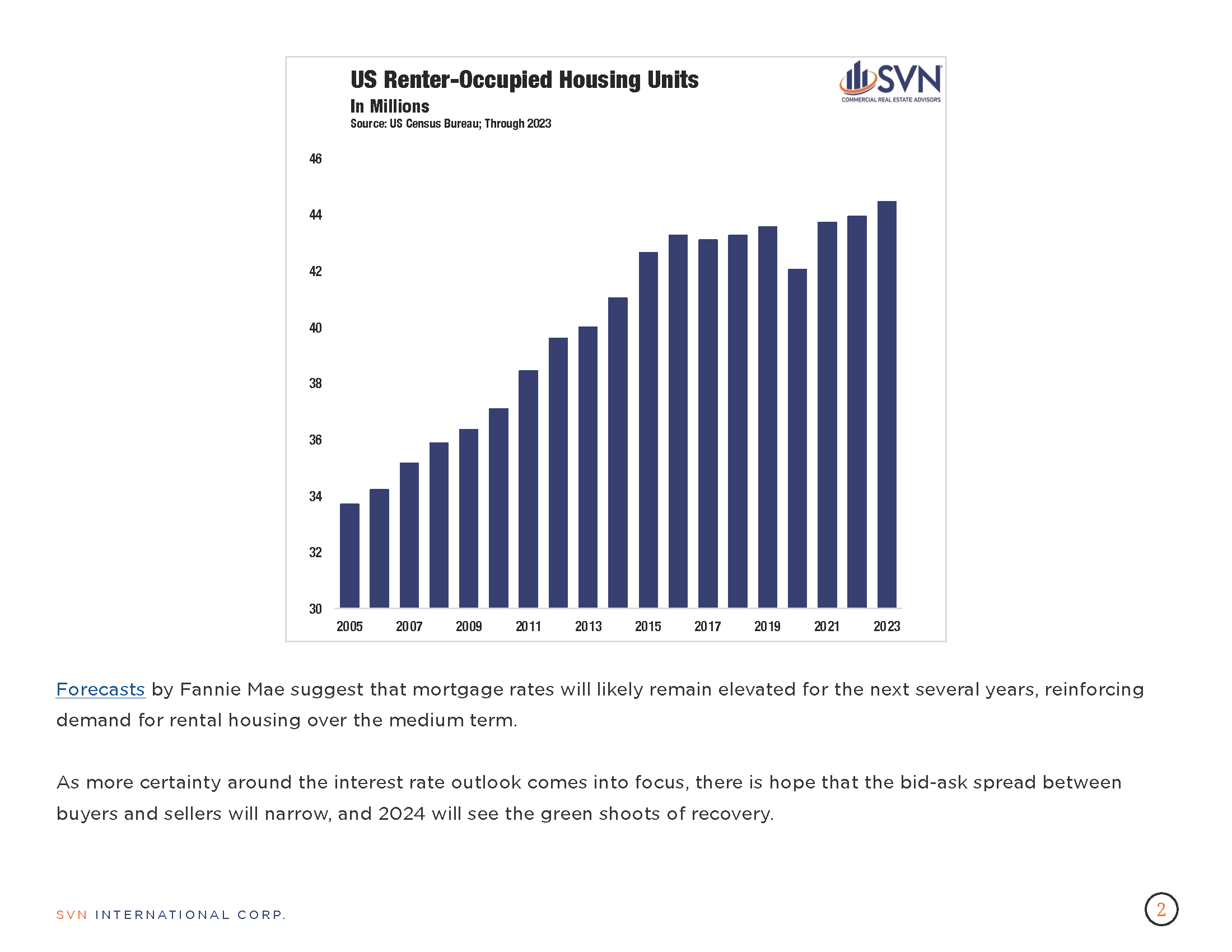
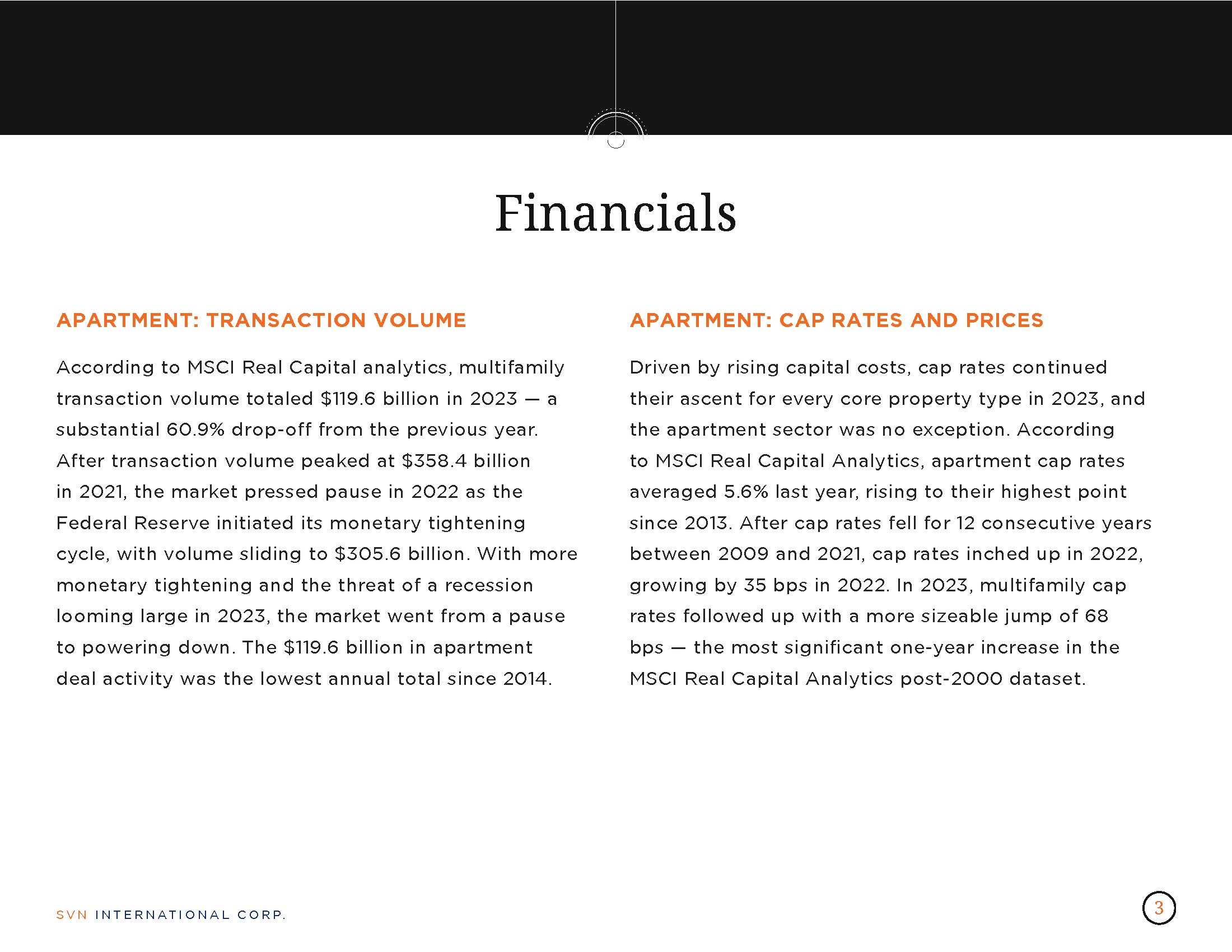
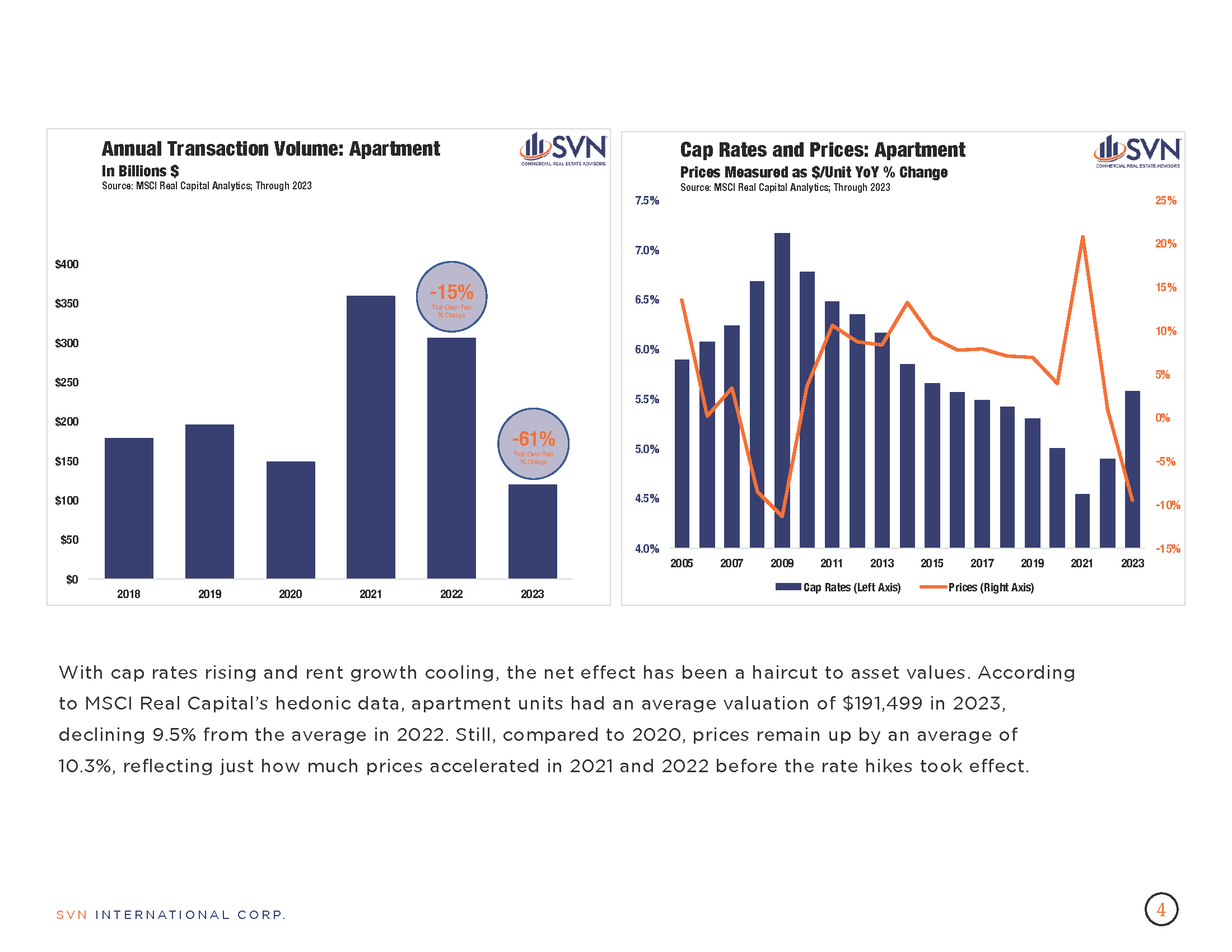
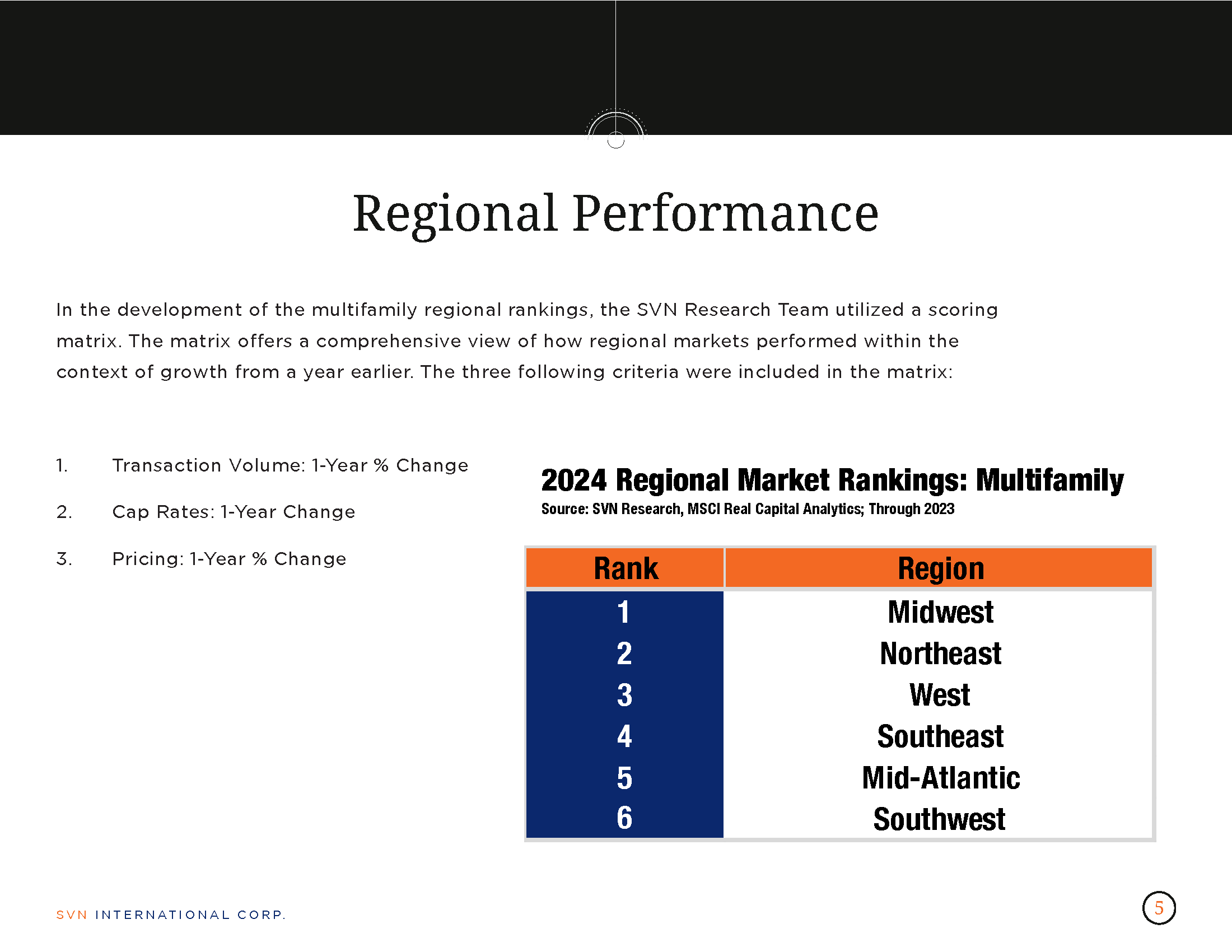
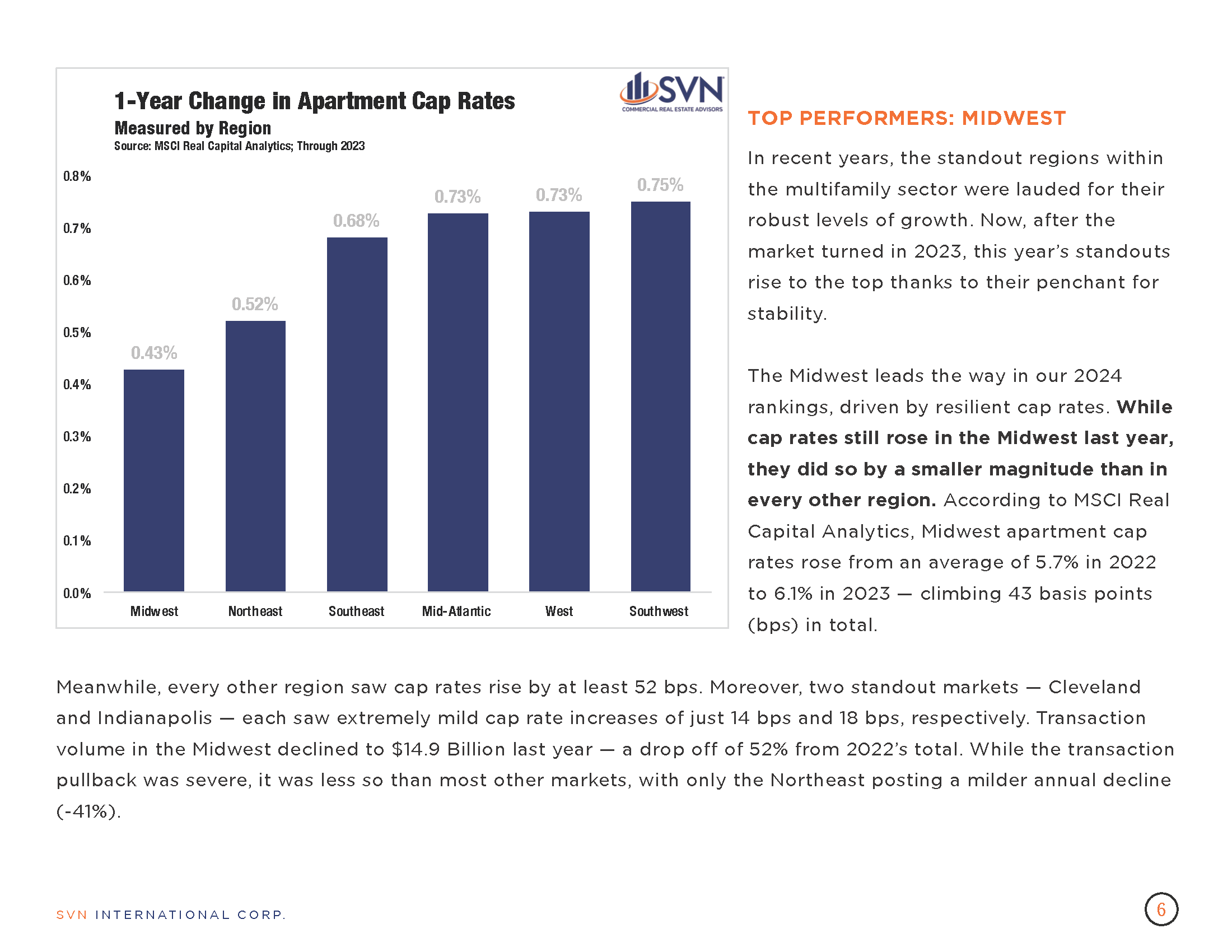
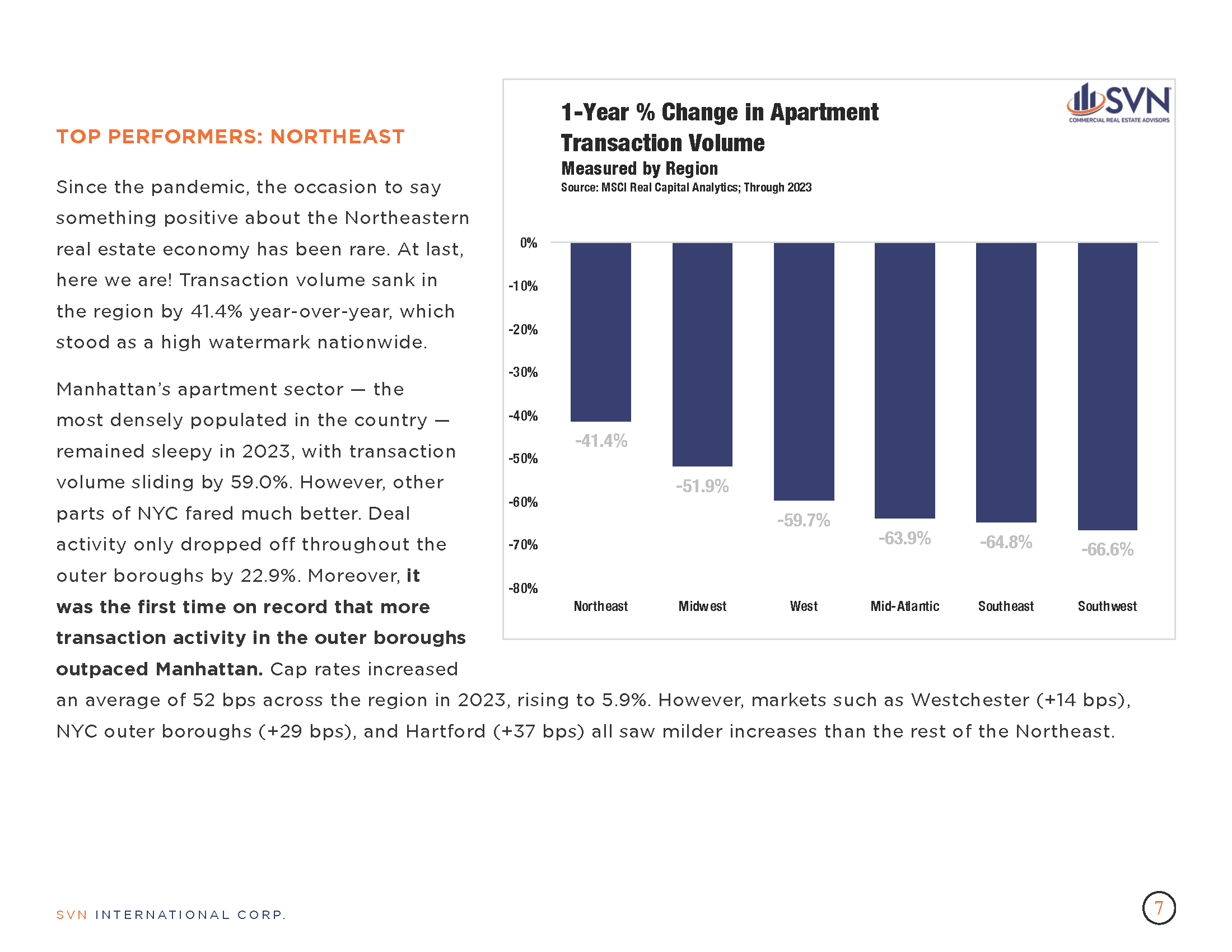
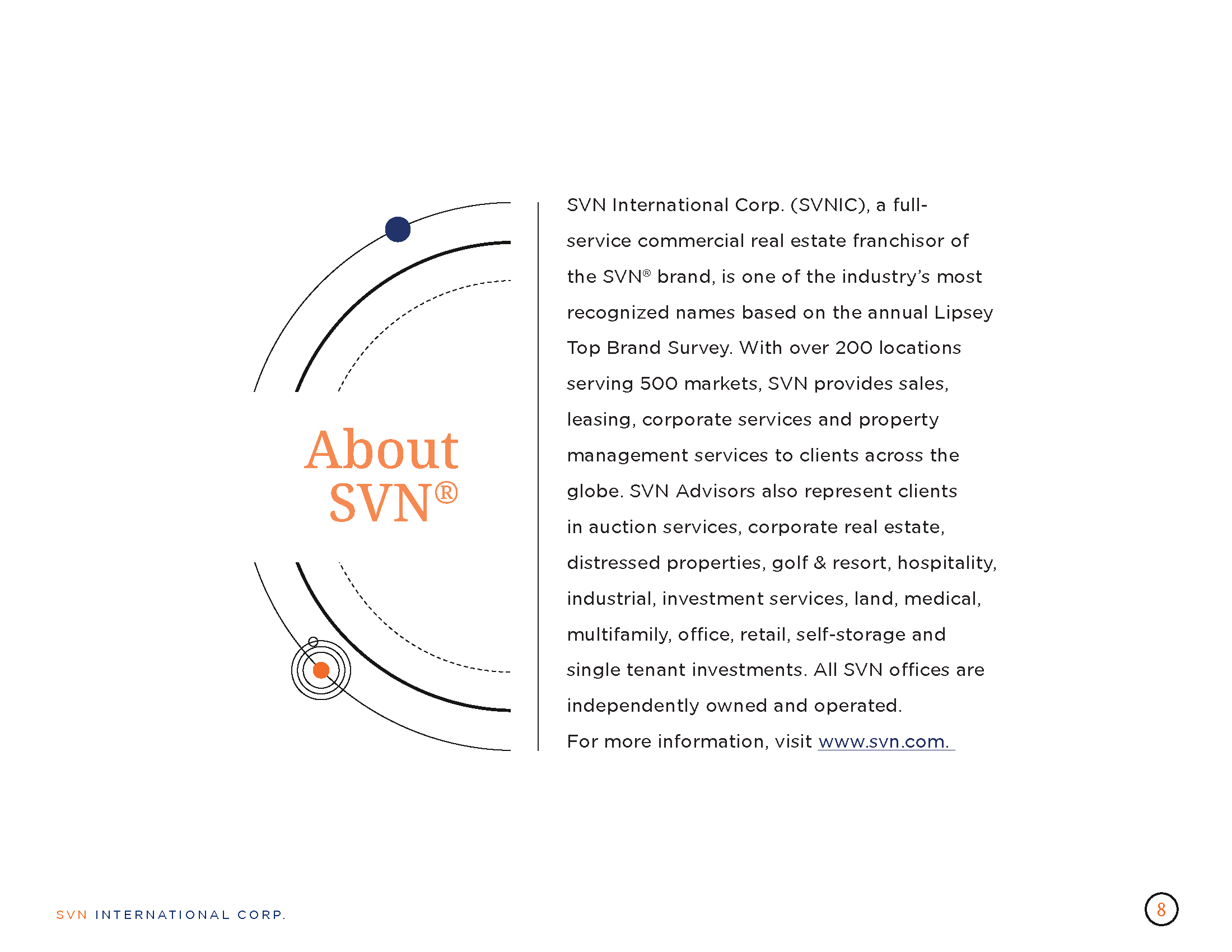

The SVN Regional Office was also named #3 in the nation among all SVN brokerages for 2023.

SVN Vanguard finished #1 in the region and #3 nationally in this year’s SVN National conference in Miami, FL. Following a successful 2022 campaign as the international firm of the year, SVN Vanguard continues to deliver top tier performance for 2023.
In addition, the San Diego County Vista Chamber of Commerce named the SVN | Vanguard North County Office the New Business of the Year.
To compile rankings for SVN’s national conference, SVN International Corp. identifies the top producing brokerages and advisors based upon closed commercial real estate transactions. Top producing Advisors are ranked in three different categories based on their gross commission income (GCI). The categories are: Partner’s Circle, President’s Circle and Achiever Award. Tony Yousif, Director- National Accounts, achieved Partner’s Circle status as one of the top advisors in the SVN network. Cameron Irons, Executive Director at SVN Vanguard, and Senior Vice President, Jon Davis, were also recognized for ranking within the Top 100 Advisors of 2023.
About SVN Vanguard
SVN Vanguard is a full-service commercial real estate office of the SVN brand, comprising over 1,600 commercial real estate Advisors and staff, in more offices in the United States than any other commercial real estate firm and continues to expand across the globe. We believe geographical coverage and amplified outreach to traditional, cross-market and emerging buyers and tenants is the only way to achieve maximum value to our clients. Visit http://www.svnvanguardoc.com for more information.
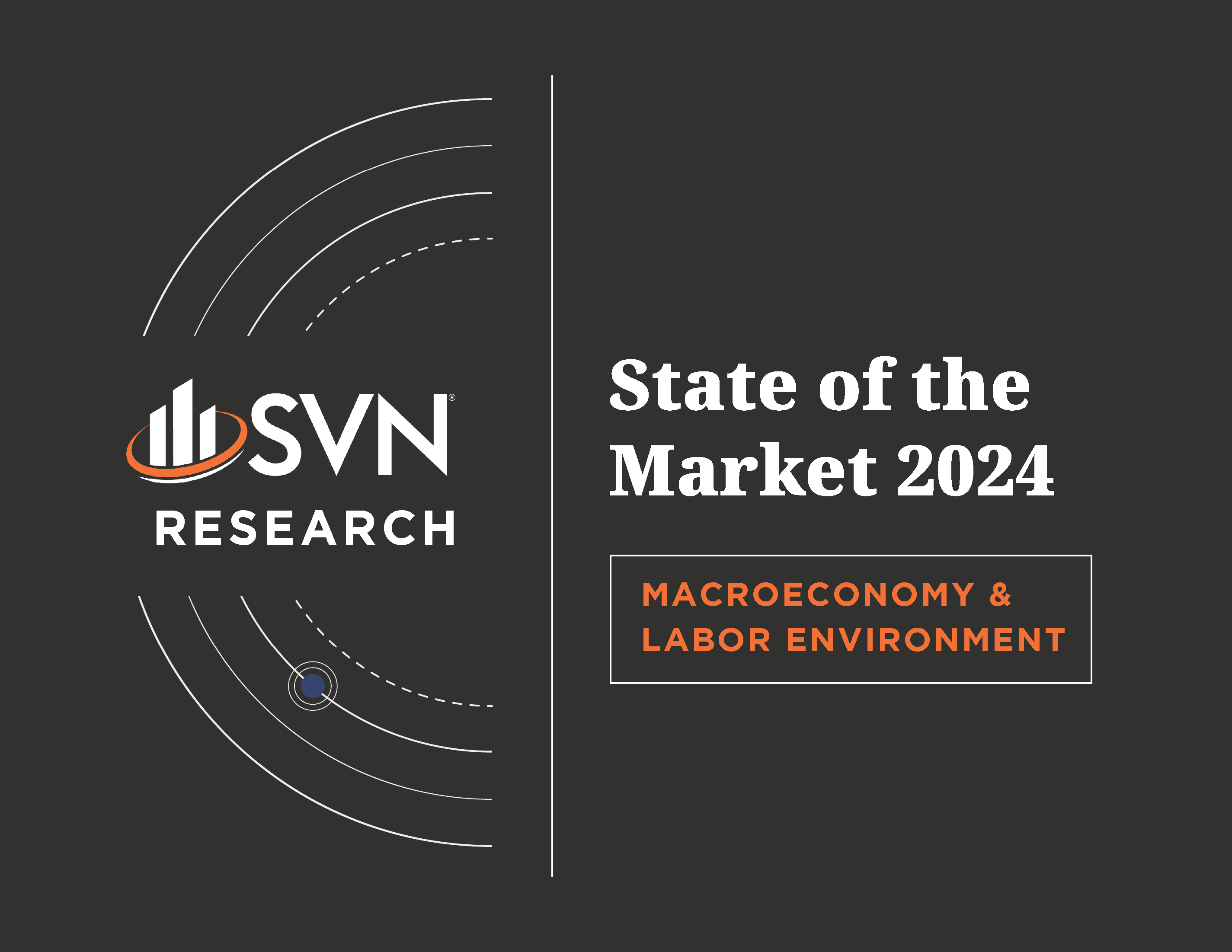
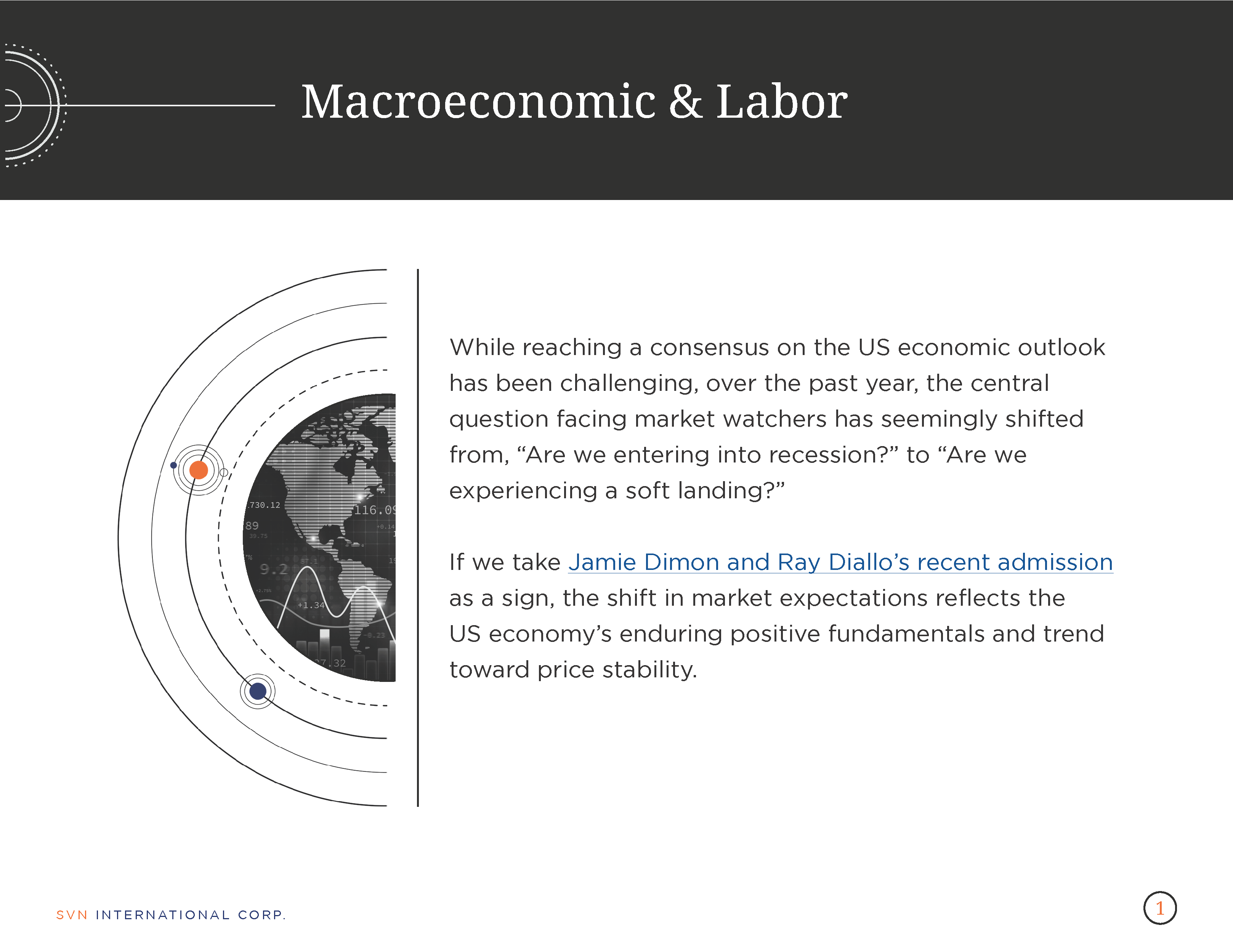
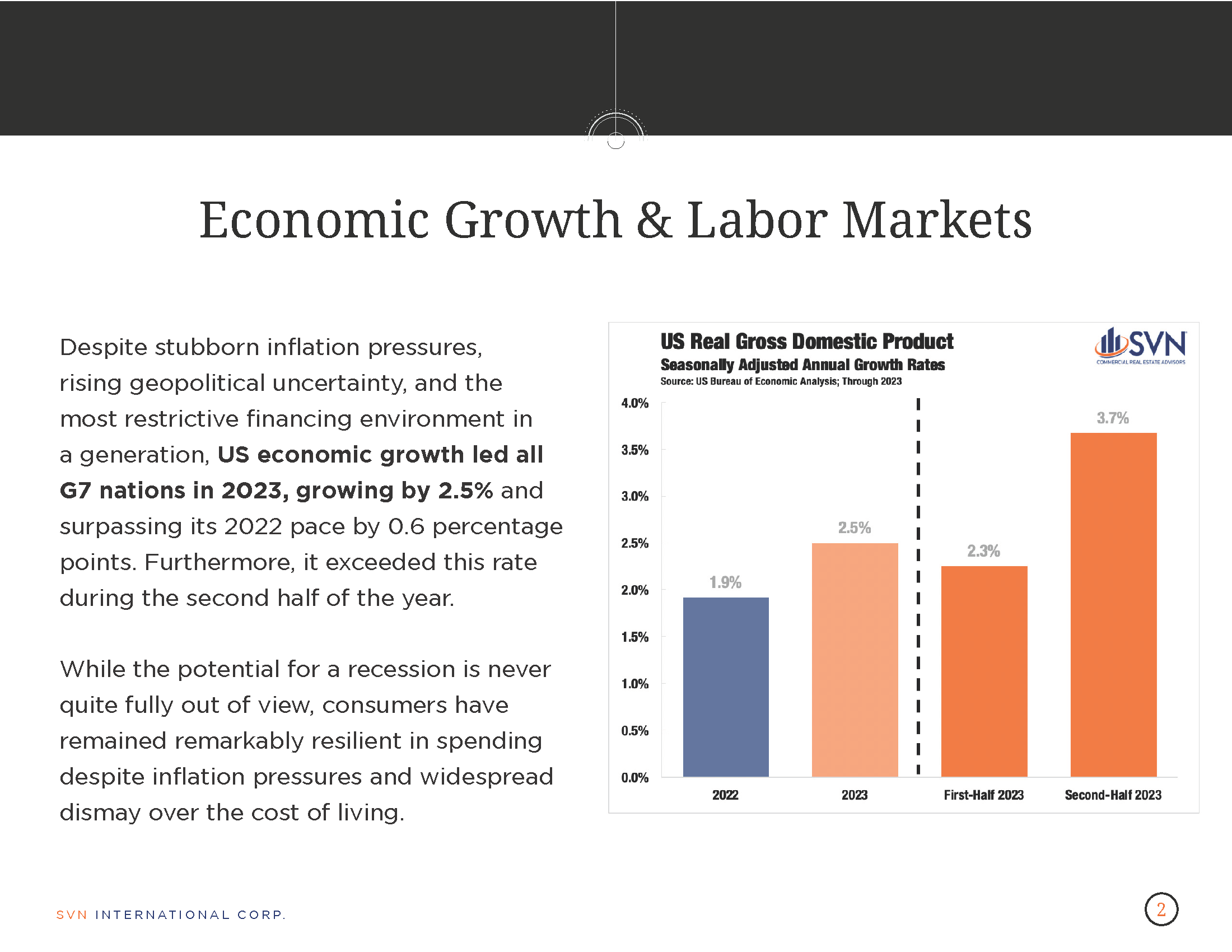
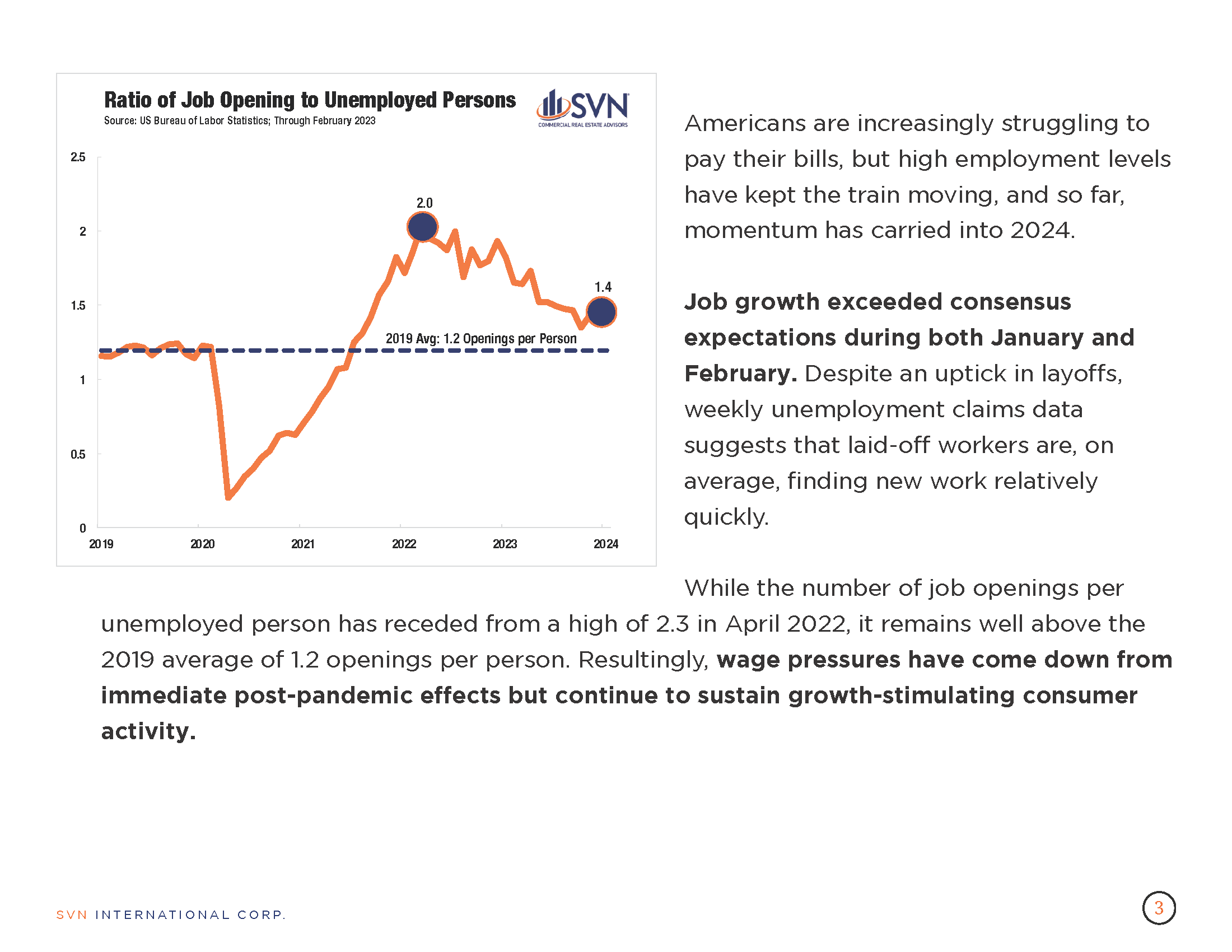
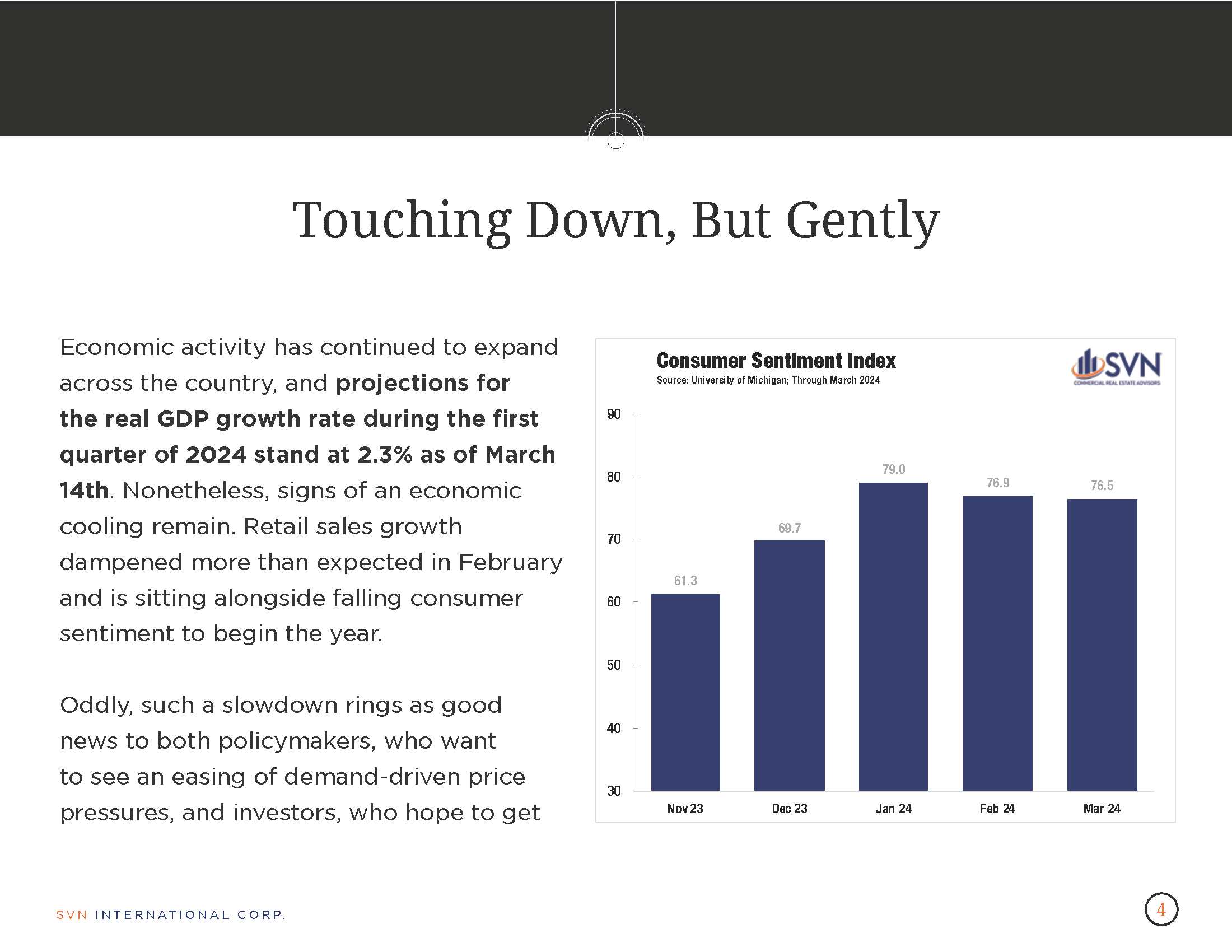
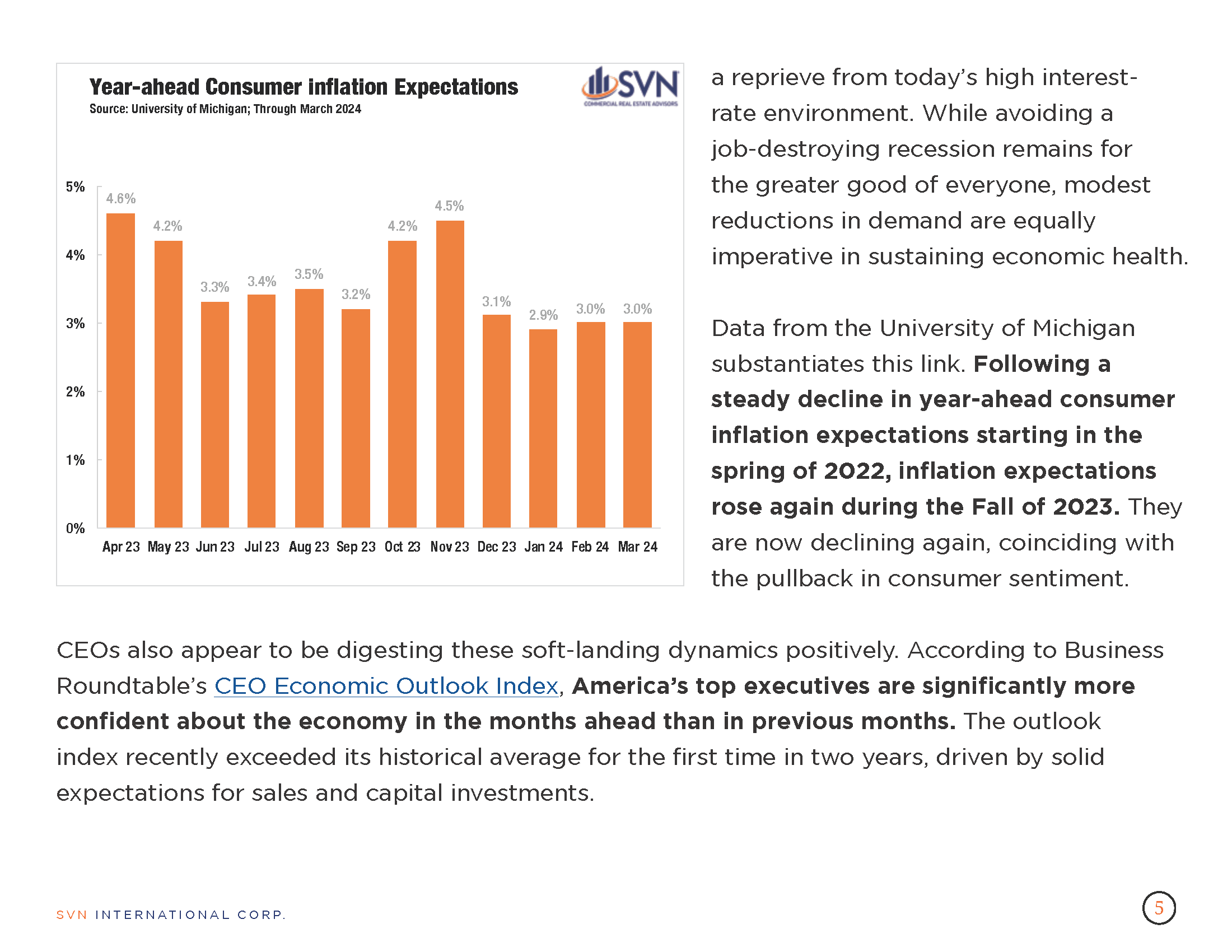
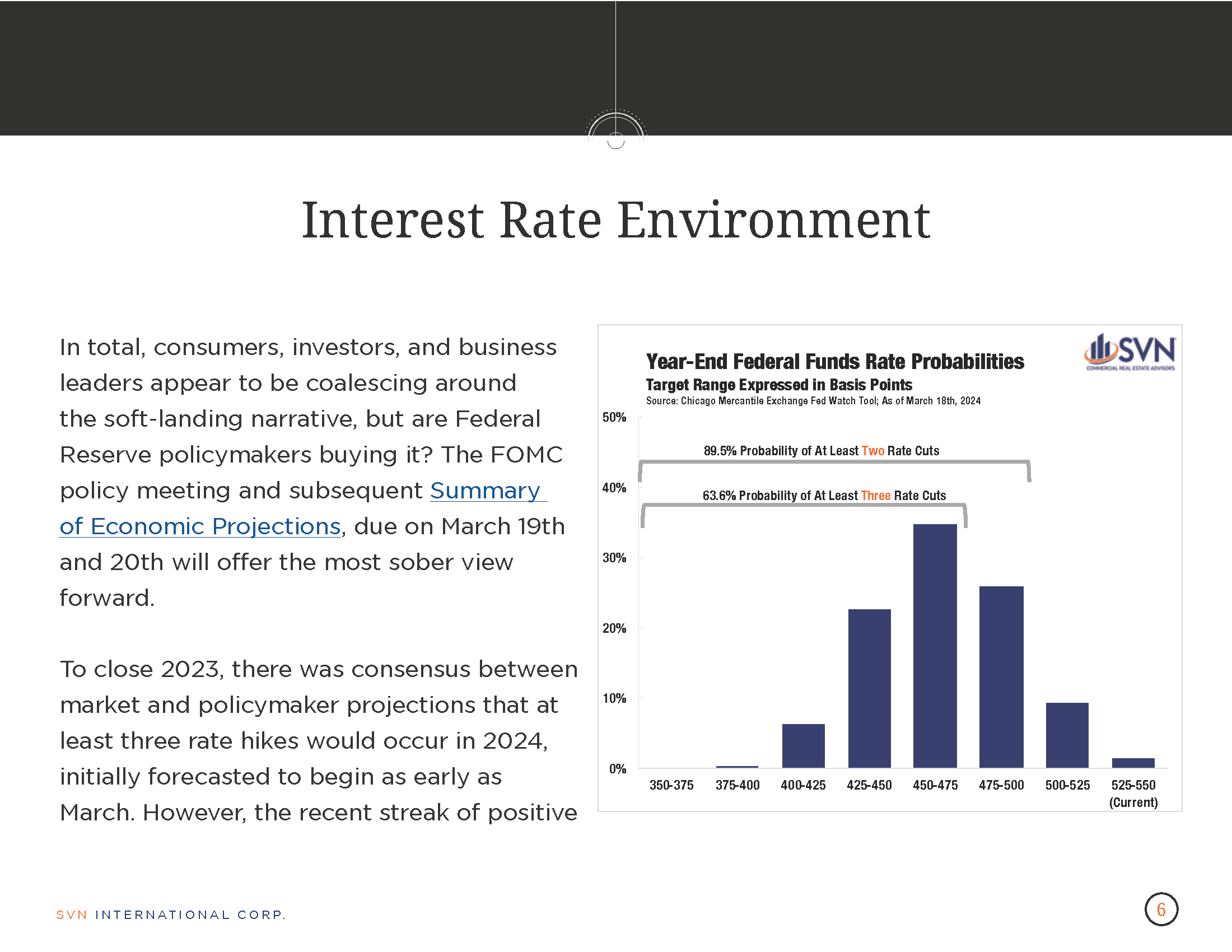
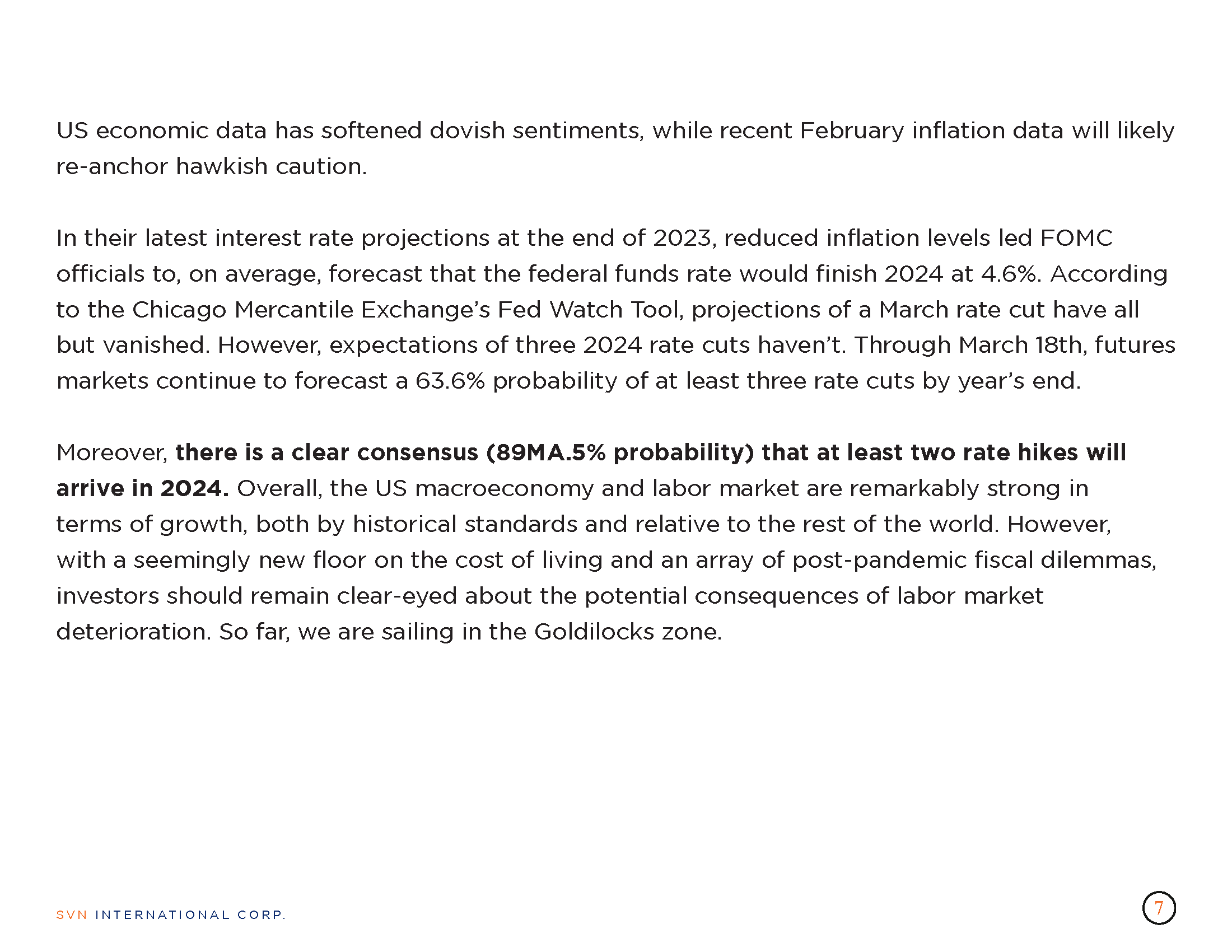
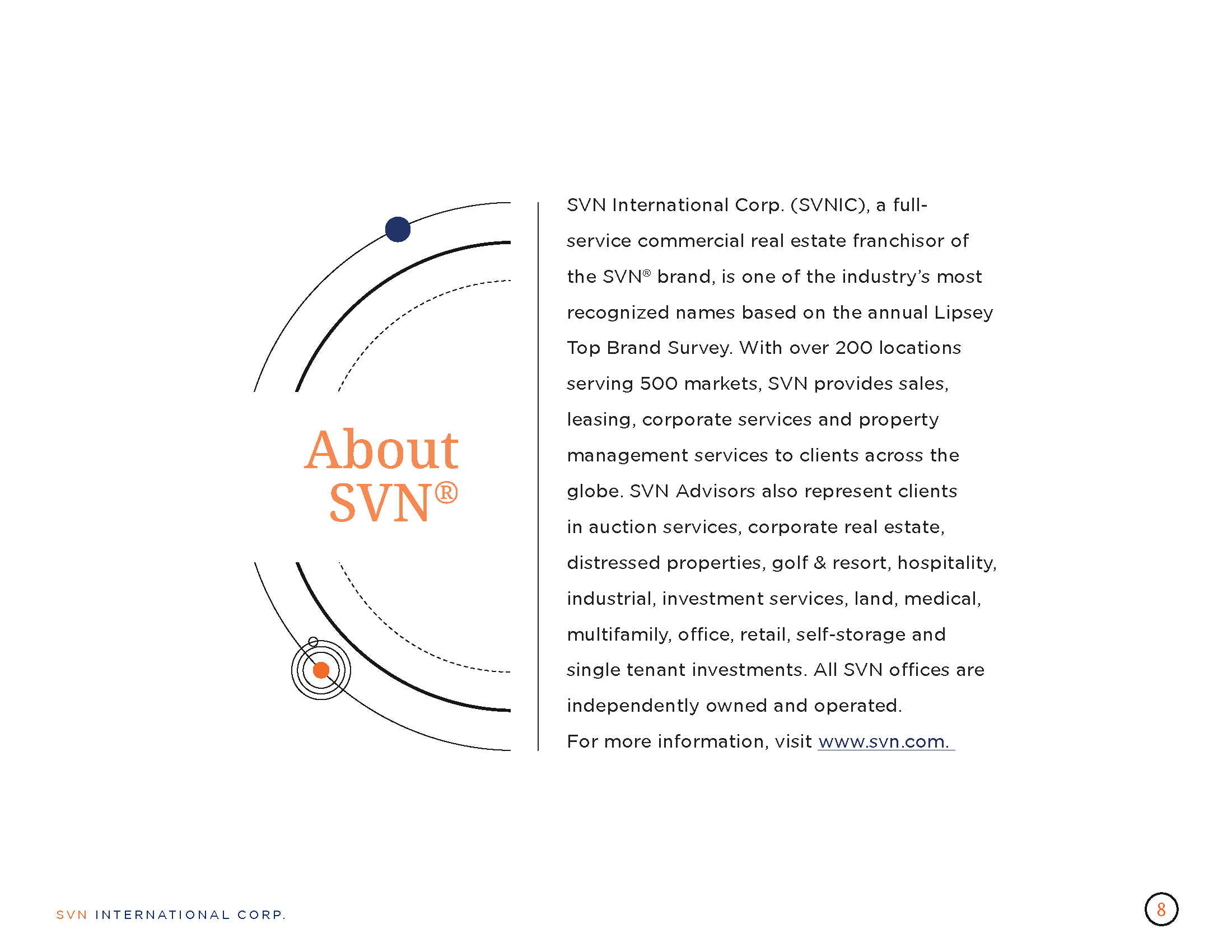


SHAREABLE FLIPBOOK DOWNLOADABLE PDF
1. INFLATION
- According to the Bureau of Labor Statistics, the Consumer Price Index rose 0.3% month over month in January and 3.1% annually.
- The monthly pace of CPI rose above market expectations and triggered a brief reversal in equity markets. Fed officials have also been increasingly warning against a premature judgment on the path of its interest rate policy, given the volatility in inflation data and the myriad factors at play.
- The shelter index continued to climb in January, rising 0.6% on the month and contributing more than two-thirds of the monthly increase.
- US energy prices fell -0.9% on the month, bringing the total price change over the previous 12 months to -4.6%. Meanwhile, food prices increased by 0.4% month-over-month in January, driven by both food-at-home and food-away-from-home prices.
- Core-cpi prices, which exclude food and energy, rose 0.4% in January.
2. FOMC MINUTES
- FOMC officials continue to express caution about cutting rates prematurely as the economic picture for 2024 continues to be beset by uncertainties, minutes from their most recent policy meeting show.
- At their January meeting, the FOMC held rates unchanged as they await further inflation and labor market developments. Notably, their post-meeting statement included updated language surrounding the path of rate cuts, with officials reiterating that no cuts would occur until the committee held “greater confidence” that inflation was receding.
- The January tally of CPI justifies the committee’s caution, as price pressures registered higher than markets had expected and initiated a brief price correction in the stock market.
- However, the minutes reflect a general sense of optimism by officials that the policy moves they pursued over the past two years have been successful. Inflation reached a 40-year high in 2022 and has steadily come down since.
3. RACIAL INEQUITIES IN US HOUSING
- According to the 2024 Chandan Economics Racial Inequities in US Housing Report, emerging challenges in housing affordability and credit conditions display disproportional impacts across racial groups.
- Housing affordability indices have fallen precipitously over the past two years, placing further constraints on renter incomes. As of Q4 2022 (the latest data available), 22.5% of all renter households live at or below the poverty line.
- Moreover, constraints show wide variations by racial groups. 37% of Native American or Alaskan Native renter households and 30% of Black renter households fall at or below the poverty line. 25% of Hispanic renter households of all ethnicities and 21.6% of households identifying as multi-racial meet this threshold. The rate falls for White and Asian renter households to 19.9% and 19.4% respectively.
- As borrowing costs and American consumer debt levels rise, credit health and access exhibit similar racial disparities. According to an analysis by Oliver Wyman, on average, 45% of Americans receive prime credit rates. When measured by race, 62% of Asian Americans, 51% of White Americans, 29% of Hispanic Americans, 24% of Americans of other racial groups, and 20% of Black Americans receive prime credit rates.
4. CRE DELINQUENCIES OUTPACE RESERVES
- A recent analysis by the Financial Times reports that the level of delinquent commercial real estate debt held by the largest big banks surpassed their total bank reserves in 2023, raising concerns about the financial system’s exposure to emerging risks.
- Utilizing data from the FDIC, the report found that the average reserves at the nation’s largest six banks have fallen from $1.60 to 90 cents for every dollar of CRE debt on which a borrower is at least 30 days late.
- Bank reserves are used to buffer against potential loan losses, and as real estate valuations fall alongside rising interest rates, pressure on reserves has increased.
- Still, it is essential to note that delinquencies don’t mean defaults, and the immediate concern for regulators is the banks’ exposure to potential risks rather than a judgment of loan conditions.
- Last year, the Federal Reserve’s supervisory functions refocused efforts toward banks and their exposure to interest rate and CRE risk following a string of bank failures during the first half of the year. Officials have increased the issuance of enforcement actions and downgrades in an effort to deter complacency.
5. PENSION INVESTMENTS IN CRE FALL
- A report by Ferguson Partners details how investment pledges to commercial real estate funding vehicles from US pensions fell by 50% in 2023 to its lowest commitment level in a decade.
- Momentum began to slow during the second half of 2023, while the 2023 average fell 25% below the average volume of the last ten years. Analysts from Ferguson call the development a “stark recalibration” from the upward trend seen over the previous five years.
- Industrial property funds attracted the largest share of CRE pledges (35%), followed by those targeting data centers, life sciences, and SFR (33%), and multifamily (27%).
6. HOMEBUILDER SENTIMENT
- According to the National Association of Home Builders, builder sentiment improved for a third consecutive month in January as construction firms expect mortgage rates to continue to moderate from last year’s levels.
- The prospect of a Fed pivot to rate cuts in 2024, alongside a lingering lack of housing supply, suggests that all else equal, building activity should improve in the coming months. However, in recent days, higher-than-expected inflation data and cautionary signals by Fed officials have pushed markets to reconsider their rate-cut expectations for 2024.
- NAHB forecasters project that at current conditions, any Fed-rate cut would likely come in the latter half of 2024, which would send single-family starts up by 5% compared to 2023, based on their forecasting.
- NAHB Economists note, however, that as building activity rises, lot availability and a shortage of skilled labor will become a growing concern.
7. “AGING IN PLACE” AND THE US HOUSING SHORTAGE
- A new analysis by Redfin shows that an increasing number of older Americans are “aging in place,” meaning they increasingly remain in their established homes rather than downsizing or moving to senior communities. The trend may complicate an already stubborn US housing shortage.
- The average US homeowner of all ages has spent 11.9 years in their home, almost double the average of 6.5 years two decades ago.
- Tenure peaked in 2020 as the pandemic homebuying boom induced a moderate decline in the rate. However, much of this downtrend was driven by millennials buying their first homes or being more inclined to initiate a life change.
- Meanwhile, baby boomers continue to stay in their homes for longer. As homebuying cools relative to pandemic-era highs, the trend in tenure may again inflect.
- Part of the reason behind the trend is financial. Most baby boomers own their homes free and clear, and longer-tenured owners bought mortgages at much lower rates than today’s generationally high rates. Further, some states retain tax incentives for older homeowners, including two of the most populated— Texas and California.
- Non-financial reasons, including generational views on assisted living and advancements in medical and tech, have also recalibrated senior housing demand.
8. BUSINESS OPTIMISM
- According to the National Federation of Independent Businesses (NFIB), small businesses grew more pessimistic in January, with the index tracked by NFIB falling to 89.9, its lowest level in eight months.
- Labor quality and inflation remained the top concerns for business owners. 21% of owners reported labor quality as their single most important problem in operating their business, while 20% cited inflation as their top problem.
- Interestingly, as a sign of improving hiring conditions, the share of owners reporting job openings they can not fill fell to 39%, the lowest reading since January 2021.
- However, hiring plans are also at a post-pandemic low. Only 14% of owners intend to create new positions within the next three months, down two percentage points from December and its lowest since May 2020.
9. COMMERCIAL PROPERTY PRICES
- According to the MSCI-RCA commercial property price index (CPPI), the decline in US commercial sector prices slowed further to start 2024.
- Prices fell 4.7% year-over-year through January but just 0.1% from December. For context, the commercial sector saw annual price declines of around 11% during the summer of 2023.
- The industrial sector again arose as the only property type with an annual increase in January. The average price on an Industrial property climbed 1.2% month-over-month from December and 1.3% over the past 12 months. The Industrial sector has experienced consecutive monthly price increases since June 2023
- Apartment sector prices declined 7.9% year-over-year, an improvement over the past several months as markets increasingly expect a Fed policy pivot on the horizon. Apartment price declines peaked in August of last year when they fell at an annual rate of 14.1%.
- Retail joined Industrial as the only sectors to post monthly price increases in January. Retail sector prices rose 0.1% from December following a -0.1 decline in the previous month. Sector prices fell -3.6% year over year, an improvement over December’s -5.5% and the sixth consecutive month of improvement.
- Suburban office prices fell -11.9% year-over-year and -0.4% month-over-month. Meanwhile, CBD office valuations fell -28.9% annually but saw its rate of monthly decline slow to just -1.0%. The differing magnitudes of devaluation largely reflect each sub-type’s sensitivity to remote work. Simply put, the negative demand shock appears most intense in dense, high-price office markets.
10. RETAIL SALES & INVENTORIES
- According to data from the US Census Bureau, US retail sales rose 0.6% year-over-year in January, the slowest pace of annual growth since the onset of the COVID-19 pandemic. Sales were down 0.8% from December.
- While sales growth has come back down to earth after achieving a record high of 52.0% year-over-year in April 2021, the industry appeared to hit a nadir of 1.29% in April 2023 and has grown steadily since then. January’s 0.6% annual mark challenges this trend and is a steep drop from the 5.31% charted in December.
- A seasonal pull-back in activity is expected during January and February as the holiday boom in sales cools off.
- Automobiles and vehicle parts continue to outperform the broader retail market. Excluding autos, US retail sales declined 0.6% month-over-month in January and climbed 1.2% year-over-year.
- Directional movement in sentiment than non-investors.
SUMMARY OF SOURCES
- (1) https://www.bls.gov/news.release/cpi.nr0.htm
- (2) https://www.federalreserve.gov/newsevents/pressreleases/monetary20240221a.htm
- (3) https://www.chandan.com/_files/ugd/df56fe_07f73f4b0a054d35b4d578e36afda4f7.pdf?index=true&utm_campaign=4cd7dbe2-1a0a-4402-80e8-02dc3fc1ac51&utm_source=so&utm_medium=mail
- (4)https://www.ft.com/content/4114454c-a924-4929-85f4-5360b2b871c6
- (5) https://www.globest.com/2024/02/21/cre-pledges-from-us-pensions-drop-50/
- (6) https://www.nahb.org/news-and-economics/press-releases/2024/02/builder-sentiment-posts-third-consecutive-monthly-gain
- (7) https://www.redfin.com/news/homeowner-tenure-2023/
- (8) https://www.nfib.com/
- (9) https://info.msci.com/l/36252/2024-02-21/y1htr4/36252/1708559067qvvmBG37/2402_RCACPPI_US.pdf
- (10) https://www.census.gov/retail/marts/www/marts_current.pdfx
Along with all other loan kinds, lenders anticipate a rise in demand for CRE loans as well.
In order to have a deeper understanding of banks’ lending practices, the Federal Reserve conducts frequent checks with them through the Senior Loan Officer Opinion Survey on Bank Lending Practices (SLOOS). The most current survey’s short summary for commercial real estate is that increasingly stricter underwriting requirements should be anticipated in the future.
Furthermore, although relatively modest demand from borrowers is eventually anticipated to be supported by softening interest rates, that is unlikely to occur until May or June.
The research stated that during the fourth quarter, a considerable number of banks reported tightening their rules for all kinds of CRE loans. Tightening requirements, particularly by the “other banks” group, were also true for multifamily loans. “Such tightening was more widely reported by other banks [or those with less than $50 billion in assets] than by large banks.”
A substantial net share of banks reported weaker demand for construction and land development loans, and major net shares of banks reported weaker demand for loans secured by nonfarm, nonresidential, and multifamily residential properties, they continued. Over the course of the fourth quarter, notable net shares of foreign banks reported tighter standards and a decline in the demand for CRE loans.
The percentage of respondents who are tightening conditions for CRE loans is close to the 2009 peak of the global financial crisis and just below the peak of the 2020 pandemic. Furthermore, the percentage of domestic respondents who reported a higher demand for CRE loans is significantly lower than it was during the GFC.
Banks expect demand for loans to increase as interest rates decrease, but with Fed messaging, this is unlikely to happen until May or June at the earliest. Dave Sloan, a senior economist at Continuum Economics, told Reuters that the results are “unlikely to generate any urgency for easing.”
An expected decline in collateral values, a less favorable economic outlook, an expected decline in the credit quality of the bank’s loan portfolio, an expected reduction in risk tolerance, an expected decline in the bank’s liquidity position, and increased concerns about funding costs and the effects of legislative or regulatory changes were the most commonly cited reasons for expecting to tighten lending standards over 2024, according to major net shares of banks, the Federal Reserve stated.
In layman’s words, the problem is bank anxiety, which has persisted since the early 2023 closures of First Republic Bank, Silicon Valley Bank, and Signature Bank. The shares of New York City Bancorp, which acquired the majority of Signature’s assets, including its CRE loan portfolio, have continued to tumble for almost a week now. At the closing on February 6, shares had dropped about 60%, from roughly $10.30 to $4.20.
There were other issues plaguing the New York community than just Signature. Though they were all tied to commercial real estate, there was also an additional charge-off on an office loan that went non-accrual during the third quarter, based on an updated valuation, and a New York cooperative loan that wasn’t in default but is now up for sale due to a unique feature that pre-financed capital expenditures. Furthermore, if one bank trembles, so do many more.
We are ready to assist investors with Santa Ana Commercial Real Estate properties. For questions about Commercial Real Estate Investments, contact your Orange County commercial real estate advisors at SVN Vanguard.
1. GDP
- Real US GDP expanded at a 3.3% annualized rate during Q4 of 2023, according to the advanced estimate from the US Bureau of Economic Analysis. The estimate surpasses the consensus projection of 2% and follows a 4.9% growth rate in Q3, bringing total 2023 US GDP to 2.5% compared to 1.9% in 2022.
- Non-residential investment increased by 1.9% in Q4 compared to 1.4% the quarter prior, led by rebounds in equipment and intellectual property products. Investment in structures eased while residential investment grew, but at a slower pace.
- Consumer spending slowed during the quarter, dropping to 2.8% from 3.1%. The slowdown was led by slowing goods consumption, while service consumption rose from 2.2% to 2.4%. Food services, accommodations, and health care were the leading growth sectors for services.
- Private inventory growth dropped from 1.27% in Q3 to just 0.07% in Q4, while government services rose at a 3.3% rate compared to 5.8% the quarter prior. Export growth accelerated from 5.4% to 6.3% while imports slowed.
2. COMMERCIAL PROPERTY PRICE INDEX
- According to the MSCI RCA commercial property price index, the pace of decline in US commercial sector prices decelerated in December, led by stronger performance in the industrial sector.
- Commercial property prices were unchanged month-over-month but fell 5.9% year-over-year through December. For context, at the end of Q3 2023, prices fell at nearly double the rate.
- The industrial sector was the only property type with an annual or monthly decline in December. Prices rose 0.3% month-over-month and 0.5% year-over-year.
- Apartment sector prices declined 8.4% year-over-year and changed little month-over-month. Sector price declines have been decelerating in recent months, signaling that apartment prices may be approaching a nadir in the ongoing cycle.
- Retail prices were down -0.1% from November and -5.5% year over year. Meanwhile, the office sector continued to post the largest decline on both a monthly and annual basis, dropping -1.3% and -16.1%, respectively.
- Total US deal volume finished 2023 down 51% compared to the previous year, its sharpest annual decline since 2009.
3. INDUSTRIAL REAL ESTATE TRENDS
- The Industrial real estate sector has been the best-performing segment of CRE during both the pandemic-era boom and the current market downturn, and while the sector is likely to remain bright, growth is expected to slow compared to previous years, according to a recent analysis by Commercial Property Executive
- 505 million sqft of industrial space was under construction as of November 2023, accounting for 2.7 of existing inventory. However, the increased cost of financing over the past two years has begun to settle into construction activity, with buyers and sellers slowing their activity.
- Prologist head of Global Research Melinda McLaughlin suggests that the logistics market is in the middle of a supply-driven “mini-cycle,” characterized by a recent influx of new supply that is likely to be followed by a pullback in project deliveries in the second half of 2024.
4. REIT PERFORMANCE IMPROVES
- Public-market real estate performance strengthened to end 2023 and could signal upcoming improvement in the private sector. According to the MSCI USA IMI Liquid Real Estate Index, public market REITs saw performance strengthen during Q4, resulting in an annual return of 8.5% during 2023 despite posting prices with negative returns throughout much of the year.
- While public markets notably utilize significantly higher rates of leverage compared to private markets, the MSCI’s Liquid Real Estate Index controls for leverage and provides readers with a more apples-to-apples comparison. Public market performance is often a leading indicator for upcoming private market activity.
- Interest rate increases in 2022 and 2023 dampened private markets, sending the MSCI Global Quarterly Property Index down 7.3% between their peak in June 2022 and September 2023.
5. RED SEA CRISIS & CRE
- Global supply chain concerns have again come into focus as a crisis unfolds in the Red Sea, creating bottlenecks for goods and sparking fears that disruptions could trigger similar supply-side price pressures compared to during the pandemic.
- A BisNow analysis shows that shipping costs skyrocketed during the first two weeks of January in response to the recent Houthi rebel attacks on Red Sea shipping. Ships passing through the Red Sea accounts for 30% of global shipping traffic, and reroutes around Africa can add an average of 10 days and $1M in fuel costs per trip.
- Real estate and construction may face the most immediate risks as architects, designers, and contractors must factor potential disruptions into their plans, projections, and project analyses.
6. INTEREST RATE FORECASTS
- With market consensus pointing towards several Fed rate cuts in 2024, some warn that robust US economic data and recent signals from central bank officials should cause investors to moderate their bets.
- According to the Chicago Mercantile Exchange’s Fed Watch Tool, futures markets, on average, project that there will be six quarter-percentage point cuts in 2024, bringing the end-of-year federal funds rate to 375-400.
- However, in recent weeks, several officials have pushed back against the idea that cuts are imminent, with most comments suggesting that policymakers will need more evidence that inflation is continuing to cool and approaching its 2% target. As a result, futures markets have recently pushed back their forecast for the first rate cut in 2024 from March to May.
- While inflation has continued to cool year-over-year, monthly price pressures continue to fluctuate. The consumer price index increased slightly faster in December than in November, registering 0.3% and 0.1% month-over-month, respectively. However, updates to the PCE price index—the Fed’s preferred inflation measure— will provide better insight into the FOMC’s considerations later this month.
7. CPI
- According to the Bureau of Labor Statistics, the Consumer Price Index rose 0.3% month over month and 3.4% annually. The monthly pace of CPI is an improvement over the previous month’s mark, which saw prices increase by 0.1% monthly, but annual prices accelerated from 3.1% in November.
- The shelter index continued to climb in December, contributing more than half of the increase during the month.
- US energy prices rose by 0.4% on the month, led by increases in electricity and gasoline rates. While there was a decrease in the natural gas index, this was mostly offset by the previously mentioned increases. Food prices increased by 0.1% month-over-month.
- Core-cpi prices, which excludes food and energy, rose 0.3% in December, in line with November’s rate of increase.
8. WHO IS MOVING INTO SFR?
- According to a Chandan Economics analysis, the average SFR household entering their unit materially differs from renters already in their homes.
- The average age of a head of household moving into an SFR in 2022 was just 38.8 years old. Conversely, the average age of preexisting householders in SFR was nearly a decade older at 47.1. Further, almost half of all new SFR renters were below the age of 35 — compared to just a quarter of preexisting SFR renters.
- Considering new SFR households are, on average, younger than their preexisting SFR neighbors, it would be reasonable to expect them to have lower incomes due to less career experience. Yet, the data indicate otherwise. Instead, new SFR households out-earn preexisting SFR households by an average of more than $11k. New SFR households have an average annual household income of $83,635, while preexisting SFRs earned $72,246.
9. OFFICE TO APARTMENT CONVERSIONS
- According to a recent Rent Cafe analysis, Office-to-Apartment conversions in major cities during 2024 are set to quadruple compared to four years ago. Over 55,000 conversions are in the pipeline for this year, soaring above the 12,100 converted in 2021.
- Conversions have steadily increased over the past four years, reaching 23,100 units in 2022 and 45,200 in 2023. More than 147,000 conversions are planned to take place over the next few years.
- Washington, DC, has the largest number of units planned for conversion from offices this year, at 5,820. New York is second, with 5,215 apartments under conversion from offices, followed by Dallas (3,163), Chicago (2,822), and Los Angeles (2,442).
10. CONSUMER SENTIMENT
- The University of Michigan’s consumer sentiment soared to 78.8 in January, its highest mark since July 2021, according to the preliminary estimate. December’s mark was 69.7, while consensus forecasts for January sat at an index value of 70 leading up to the report.
- Consumer confidence was boosted by views that inflation has turned a corner and income expectations are beginning to strengthen. One year ahead, inflation fell to 2.9%, the lowest level since December 2020. Meanwhile, the five-year outlook edged lower to 2.8% from 2.9% in December.
- Consumer expectations climbed to 75.9 from 67.4 the previous month, while the measure assessing current economic conditions rose to 83.3 from 73.3.
- Taking January and December together, consumer sentiment has climbed a cumulative 29%, the largest two-month increase since 1991, with all five index components rising for the second straight month.
SUMMARY OF SOURCES
- (1) https://www.bea.gov/
- (2) https://info.msci.com/l/36252/2024-01-24/y1dxf9/36252/17061343540uAdEadf/2401_RCACPPI_US.pdf
- (3) https://www.commercialsearch.com/news/whats-next-for-industrial-real-estate/
- (4) https://www.msci.com/www/quick-take/what-listed-markets-might-be/04330853288
- (5) https://www.bisnow.com/national/news/construction-development/geopolitical-strife-supply-chain-snafus-mean-deja-vu-for-cre-construction-delays-122562
- (6) https://www.reuters.com/markets/rates-bonds/investors-temper-us-rate-cut-bets-fed-meeting-looms-2024-01-24/
- (7) https://www.bls.gov/news.release/cpi.nr0.htm
- (8) https://www.chandan.com/post/who-is-moving-into-sfr
- (9) https://www.bisnow.com/national/news/multifamily/office-to-apartment-conversion-pipeline-in-major-cities-quadruples-in-4-years-122497
- (10) http://www.sca.isr.umich.edu/
Spreads continue to rise: large for retail, moderate for offices, and low for industrial.
The Boulder Group reports that cap rates on single-tenant net lease buildings increased once more in the final quarter of 2023. Increases were seen in all three major groups—office, retail, and industrial—though not equally. For retail, they increased by eight basis points to 6.35%, for industrial by four basis points to 7.00%, and for office by fourteen basis points to 7.55%.
They stated, As asset pricing has not kept up with the massive increase in borrowing costs over the past year, cap rates continued to rise in the fourth quarter. In addition, a deficiency of 1031 purchasers is driving up the supply of real estate. In Q3 and Q4, the total number of properties increased by 11.6% to 4,085. The retail industry increased by 12.7%, from 2,753 to 3,103. Industrial, 9.2%, from 382 to 417. Office saw a 7.2% increase, from 527 to 565.
From 30 to 31 basis points in retail (1 point), 25 to 32 for industrial (7 points), and 55 to 67 for office (12 points), the asking versus closed cap rate spread expanded. In contrast to the recent market shrinkage that JLL reported it had observed, the gaps between buyers and sellers widened.
The drugstore and dollar store sectors are the ones in the net lease retail category that most clearly show the trend toward higher supply, according to the business. “Lease problems at the corporate level and ballooning supply are impeding both sectors, resulting in higher cap rate hikes than the retail industry as a whole. Moody’s downgraded Walgreens from investment grade to “junk” bond classification in the fourth quarter of 2023.
There is currently a large range for the 6.46% in Q4 of 2023 for the drug store industry. At 6.12%, CVS has the lowest rate. Walmart’s score was 6.33. Rite Aid’s percentage was 8.80%.
In the dollar store industry, Dollar Tree has been impacted by the Family Dollar brand, leading the company to reevaluate the Family Dollar assortment, stated Bolder Group. The pressure on Family Dollar is seen in the median requested cap rates by remaining lease term: In the fourth quarter, cap rates for Family Dollar and Walgreens increased by 25 and 15 basis points respectively. Over the course of nine to eleven years, Family Dollar saw 7.25%, Dollar Tree saw 7.00%, and Dollar General saw 6.85%. With Dollar General and Family Dollar at 8.5% and Dollar Tree at 8.40%, things were more evenly distributed at the upper end of the term left, or less than three years.
We are ready to assist investors with Santa Ana multifamily properties. For questions about multifamily properties, contact your Orange County commercial real estate advisors at SVN Vanguard.





















